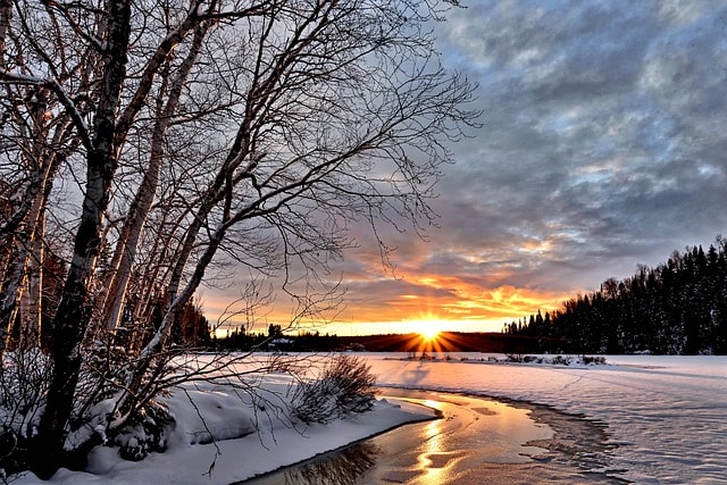|
Winter is a wonderful time when nature looks pristine and untouched, almost like a bride. Use this great opportunity to get beautiful pictures. “I wish that all of nature’s magnificence, the emotion of the land, the living energy of place could be photographed.” Annie Leibovitz Both the eye of a talented pro or a newbie can catch the beauty of a snowy fairy tale. The main task is to be able to convey every single detail in a picture.
The winter season puts forward special requirements for photographers and photo equipment. It can be attributed to the most reverent and romantic. Cold evenings and cozy blankets, a dance of snowflakes and the glitter of sidewalks in the lights of lanterns, frozen spruce branches and fancy icicles hanging from the roofs... All these little things would go unnoticed in the bustle of everyday routine if not for the photographers! Winter is a test not only for the photographer but also for his equipment. Remember the useful rule: the frost is not as bad for the camera as temperature or humidity drops. Due to temperature fluctuations, the lens can easily mist, so take a napkin to wipe it. In addition, in cold weather, battery life is significantly reduced. It is better to bring an extra battery. If we are not talking about extreme frosts, you will not harm the camera. However, you should still monitor its condition: if the screen begins working with a delay, or focusing is much slower than usual, then you should stop the photo session After returning from the street, do not get the camera out of the bag and do not turn it on at least a few hours Let us consider the significant differences in photography in the summer and winter seasons: colors, lighting and much more. Most often, taking pictures in cold weather, people are searching for bright ones, with blue sky and sparkling snow. But just this peculiarity of the surrounding landscape can play a cruel joke: the camera automatics, trying to compensate for the brightness of the snow, darkens the whole picture, which means the loss of the shadows. To avoid this, use “plus” on the exposure compensation button. The situation is similar with white balance – using automatic settings will lead to bluish pictures. That’s where white balance correction is necessary ( therefore, it is better to take photos in RAW). You can take advantage of cloudy weather. There are two main things to know about taking pictures in such weather conditions. Firstly, even if the day is cloudy, the snow still remains too bright for the camera. Secondly, you should not try to take pictures of complex objects in cloudy weather: they will almost certainly not be the most successful. In contrast to the summer and spring periods, winter is monochrome, and therefore, brighter objects will stand out favorably against white or grey snow, especially if they are really vivid. Rich colors - red, green, blue, orange and others effectively highlight the object in the picture and attract attention: an orange umbrella in falling snowflakes or a rowan bush covered with snow look astonishing. In winter, a picture taken in the twilight can compete with daytime photos. You just need to choose a place where there are a lot of artificial lights, preferably multi-colored. Reflecting from snow and ice, the light creates an absolutely wonderful picture, transforming landscapes that look dull and unremarkable during the day into magical surroundings. The falling snow is also not an obstacle for excellent pictures. Knowing some tricks will result in amazing photos. Never use a flash! Snowflakes are tiny crystals, so an unsystematic reflection of light is guaranteed. The shutter speed here acquires great importance since it depends on how exactly the falling snow is displayed in the picture - whether it will be a slow fall (short shutter speed) or a dynamic flight (long shutter speed). And of course, do not forget to periodically clean the lens filter of adhering snow, so as not to get completely unnecessary spots in the picture. The most important rule is not related to photography though. Nothing will work out if you freeze in 5 minutes or your fingers will be too numb to click the camera button. So if you are dressed warm, then take your camera and hurry towards winter adventures!
0 Comments
Leave a Reply. |
AuthorArchives
November 2022
CategoriesVisit our other BLOGS!
|
|


 RSS Feed
RSS Feed




